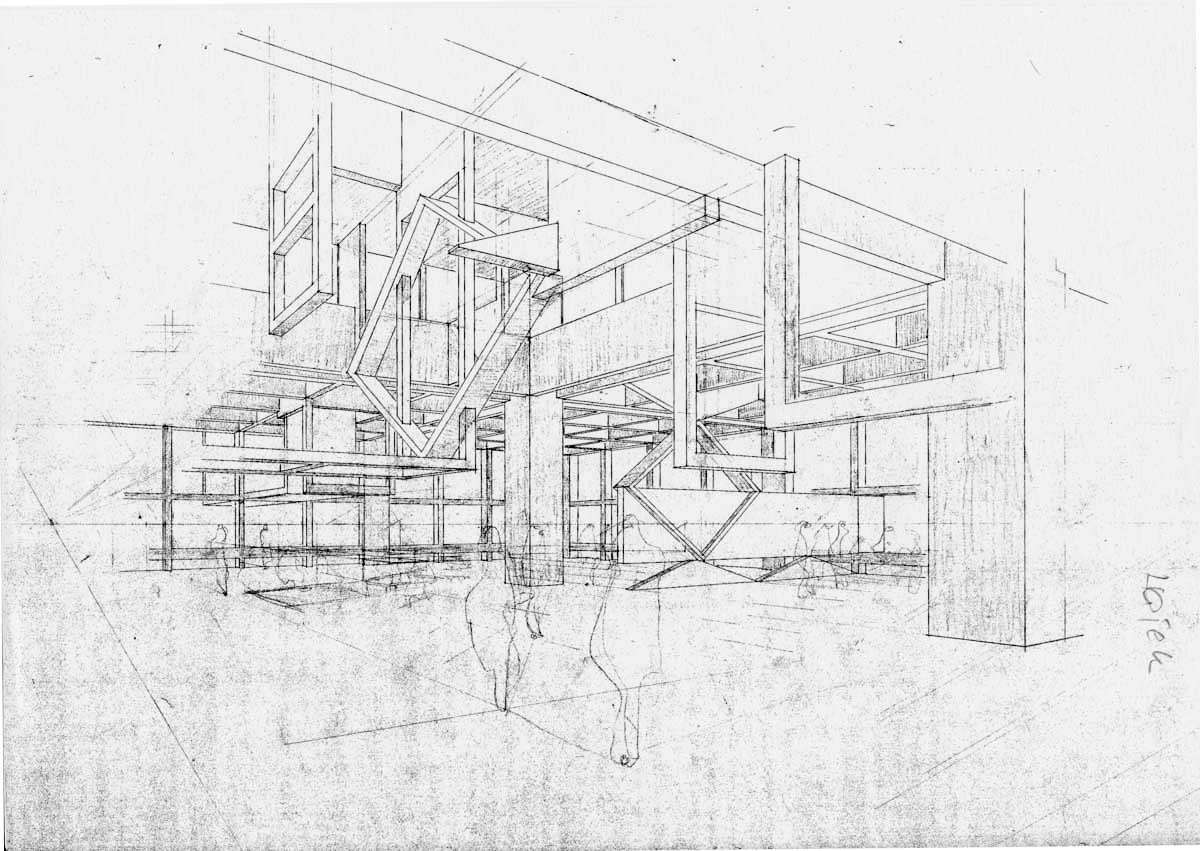The artist Otto Herbert Hajek
Painter, sculptor, graphic artist (1927-2005)
 Otto Herbert Hajek was born in 1927 in Kaltenbach in today's Czech Republic. He studied sculpture at the State Academy of Fine Arts in Stuttgart (1947-1954) and was professor of sculpture in Karlsruhe from 1980 to 1992. As chairman of the German Artists' Association in the 1970s, he was particularly committed to promoting artists. He received numerous awards and honors, including the Federal Cross of Merit in 1982.
Otto Herbert Hajek was born in 1927 in Kaltenbach in today's Czech Republic. He studied sculpture at the State Academy of Fine Arts in Stuttgart (1947-1954) and was professor of sculpture in Karlsruhe from 1980 to 1992. As chairman of the German Artists' Association in the 1970s, he was particularly committed to promoting artists. He received numerous awards and honors, including the Federal Cross of Merit in 1982.
 He became internationally known through his exhibitions at the documenta in Kassel (1959 and 1964) and, among others, at the Castel Sant'Angelo in Rome with 350 sculptures, paintings and 'city iconographies' (1981). His sculptures - early abstract objects in bronze, then later mainly colored, geometric sculptures in steel and concrete, his sculptural placemaking in public spaces and his interior and facade designs on buildings can be found in Berlin, Moscow, Adelaide and the Vatican museums, among others.
He became internationally known through his exhibitions at the documenta in Kassel (1959 and 1964) and, among others, at the Castel Sant'Angelo in Rome with 350 sculptures, paintings and 'city iconographies' (1981). His sculptures - early abstract objects in bronze, then later mainly colored, geometric sculptures in steel and concrete, his sculptural placemaking in public spaces and his interior and facade designs on buildings can be found in Berlin, Moscow, Adelaide and the Vatican museums, among others.
Hajek's design of the Mensa at Saarland University (1966-1970) was the breakthrough for his architecture-related art work in public space. His related estate and photo archive are located in the Southwest German Archive for Architecture and Civil Engineering.
Hajek's drawings used in this web app are depicted courtesy of SAAI.
About the prehistory of the Mensa
 Otto Herbert Hajek's walk-in sculpture 'Frankfurter Frühling' at documenta III in Kassel in 1964 was the catalyst for his commission to design the Mensa. Architect Walter Schrempf, who had won the competition for the mensa a year earlier, liked Hajek's grand spatial ideas. So after the documenta, he went to Hajek's studio in Stuttgart with a roll of large blueprints for the mensa under his arm. The architect asked the artist to come up with a design for the spatial layout of the dining hall and the sun shades on the facade of the Mensa.
Otto Herbert Hajek's walk-in sculpture 'Frankfurter Frühling' at documenta III in Kassel in 1964 was the catalyst for his commission to design the Mensa. Architect Walter Schrempf, who had won the competition for the mensa a year earlier, liked Hajek's grand spatial ideas. So after the documenta, he went to Hajek's studio in Stuttgart with a roll of large blueprints for the mensa under his arm. The architect asked the artist to come up with a design for the spatial layout of the dining hall and the sun shades on the facade of the Mensa.
... there was no guideline. I had to study the plans ...
for the task in Saarbrücken I had to include the function and learn to express myself in a different language, that of the interior designer, architectural designer ...
Quote Hajek as interior designer
 Half a year later, Hajek came to Saarbrücken with the finished model of the Mensa. Made of wood and painted white, measuring 1.20 m x 1.20 m exactly on a scale of 1:50, the model had a removable roof including the two light shafts at the top and the coffered ceiling inside the dining hall, which served the artist as a basic orientation for the arrangement of his room sculptures. The main beams for the large room sculptures in the dining hall were also already laid out in the model including the finished façade.
Half a year later, Hajek came to Saarbrücken with the finished model of the Mensa. Made of wood and painted white, measuring 1.20 m x 1.20 m exactly on a scale of 1:50, the model had a removable roof including the two light shafts at the top and the coffered ceiling inside the dining hall, which served the artist as a basic orientation for the arrangement of his room sculptures. The main beams for the large room sculptures in the dining hall were also already laid out in the model including the finished façade.
The model was presented to the Building Commission and the Building Department of the Ministry of Construction on December 16, 1965, and was unanimously approved on February 17, 1966.
Spatial sculptures and reliefs
Hajek came to Saarbrücken several times a year from 1966 to the construction site and stayed with the Schrempf family, where he repeatedly consulted with the architect. Although he had sketched everything out and arranged it in the model, over a period of four years he had to be on site again and again in person with the then site manager Wolfgang Ernst, who was responsible for implementing Hajek's work in the dining hall, in order to realize his designs together with the craftsmen.
It was a celebration every time Hajek came to the construction site!
Employees of the architectural office.
That's how former employees of the architecture firm remember it. The challenges were numerous:
The supporting structure had to be made of lightweight concrete suspended from the coffered ceiling, which the structural engineer always had to check. The large geometric room sculptures made of wood were then attached to it, which were made by a carpenter according to Hajek's exact plans, painted and then fitted on site. The two permanently installed, colorless, vertical concrete steles had to be wood-shuttered by hand, and the built-in band of wall relief running horizontally above and along the food counter for a distance of almost 60 meters:
A play of raised and recessed geometric shapes in succession, a series of reliefs, some squarely framed and outlined by the wall surrounding them, with freewheeling, frieze-like and tense arrow elements, as well as partial elements punched out and mirrored as a 'negative' next to them.
In order to divide the space horizontally as well, Hajek installed three partition wall reliefs as room dividers that extend through the windows to the outside. They thus connect the inside with the outside and help shape the facade.
Color paths quote Hajek
- Color paths go over cities and make people aware of the city as an artificial entity.
- Color paths confront people with their environment.
- Color paths bring the absent to presence.
- Color paths brings art to the paths.
- Color paths are nuclear forms.
- Color paths are an urbanistic idea.
- Color paths are a spatial discipline.
- Color paths explain distances, are memory measures and spatial orientation.
- Color paths create a horizon in which an encounter with objects becomes possible.
- Color paths explain zones of different significance.
- Color paths are sturgeon and dropout paths.
- Color paths also go over existing things.
- Color paths are walkable sculpture.
- Color ways aim at the human being entirely.
- Color ways give a political consciousness.
- Color paths poses the question of consciousness.
- Color paths declare the military airspace an art space.
- Color paths are also the contrails that capture the suns.
- Color paths explain the moon.
- Color paths are urban art.
O. H. Hajek
Continue reading ...








